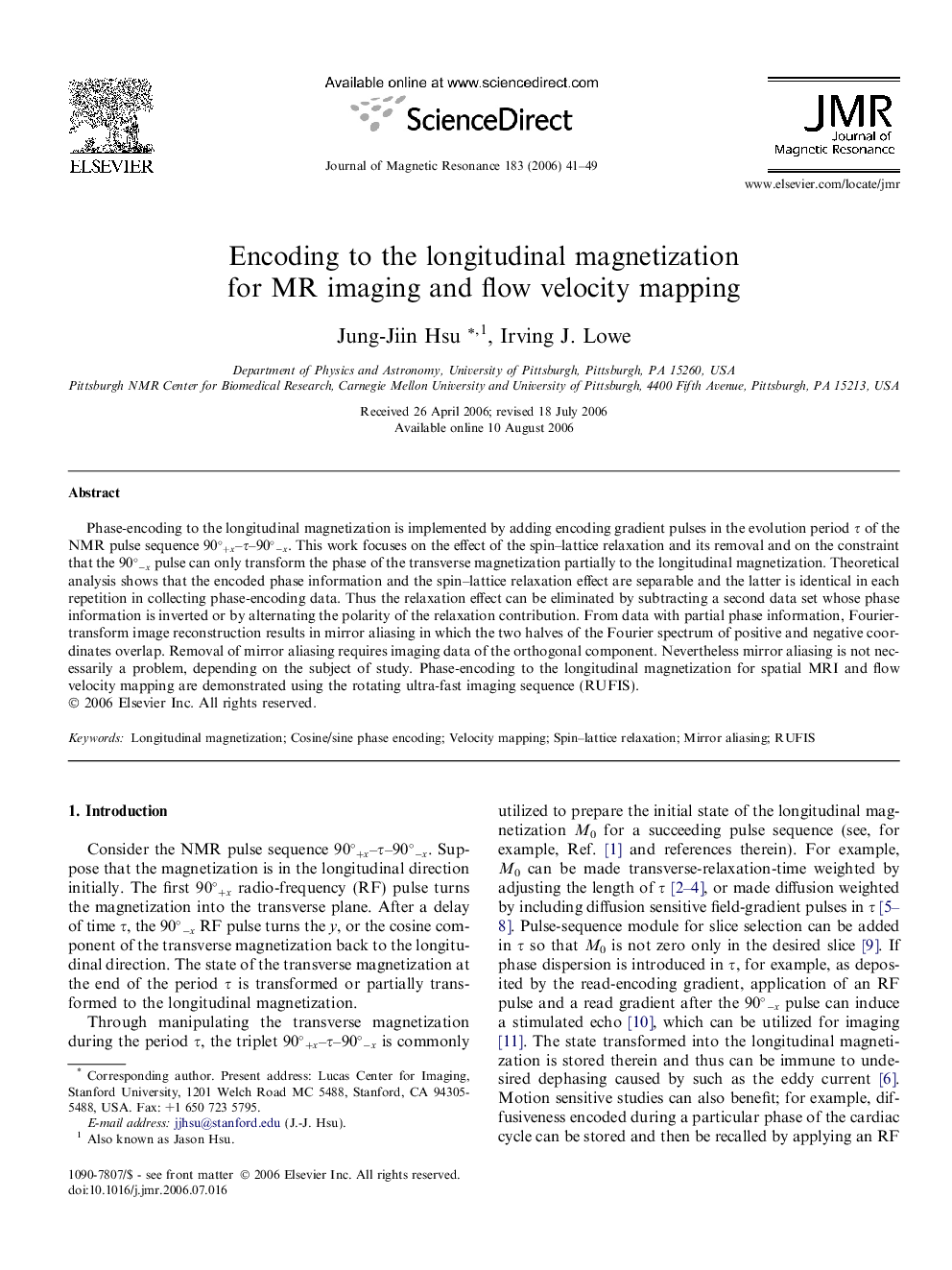| Article ID | Journal | Published Year | Pages | File Type |
|---|---|---|---|---|
| 5407673 | Journal of Magnetic Resonance | 2006 | 9 Pages |
Abstract
Phase-encoding to the longitudinal magnetization is implemented by adding encoding gradient pulses in the evolution period Ï of the NMR pulse sequence 90°+x-Ï-90°-x. This work focuses on the effect of the spin-lattice relaxation and its removal and on the constraint that the 90°-x pulse can only transform the phase of the transverse magnetization partially to the longitudinal magnetization. Theoretical analysis shows that the encoded phase information and the spin-lattice relaxation effect are separable and the latter is identical in each repetition in collecting phase-encoding data. Thus the relaxation effect can be eliminated by subtracting a second data set whose phase information is inverted or by alternating the polarity of the relaxation contribution. From data with partial phase information, Fourier-transform image reconstruction results in mirror aliasing in which the two halves of the Fourier spectrum of positive and negative coordinates overlap. Removal of mirror aliasing requires imaging data of the orthogonal component. Nevertheless mirror aliasing is not necessarily a problem, depending on the subject of study. Phase-encoding to the longitudinal magnetization for spatial MRI and flow velocity mapping are demonstrated using the rotating ultra-fast imaging sequence (RUFIS).
Related Topics
Physical Sciences and Engineering
Chemistry
Physical and Theoretical Chemistry
Authors
Jung-Jiin Hsu, Irving J. Lowe,
